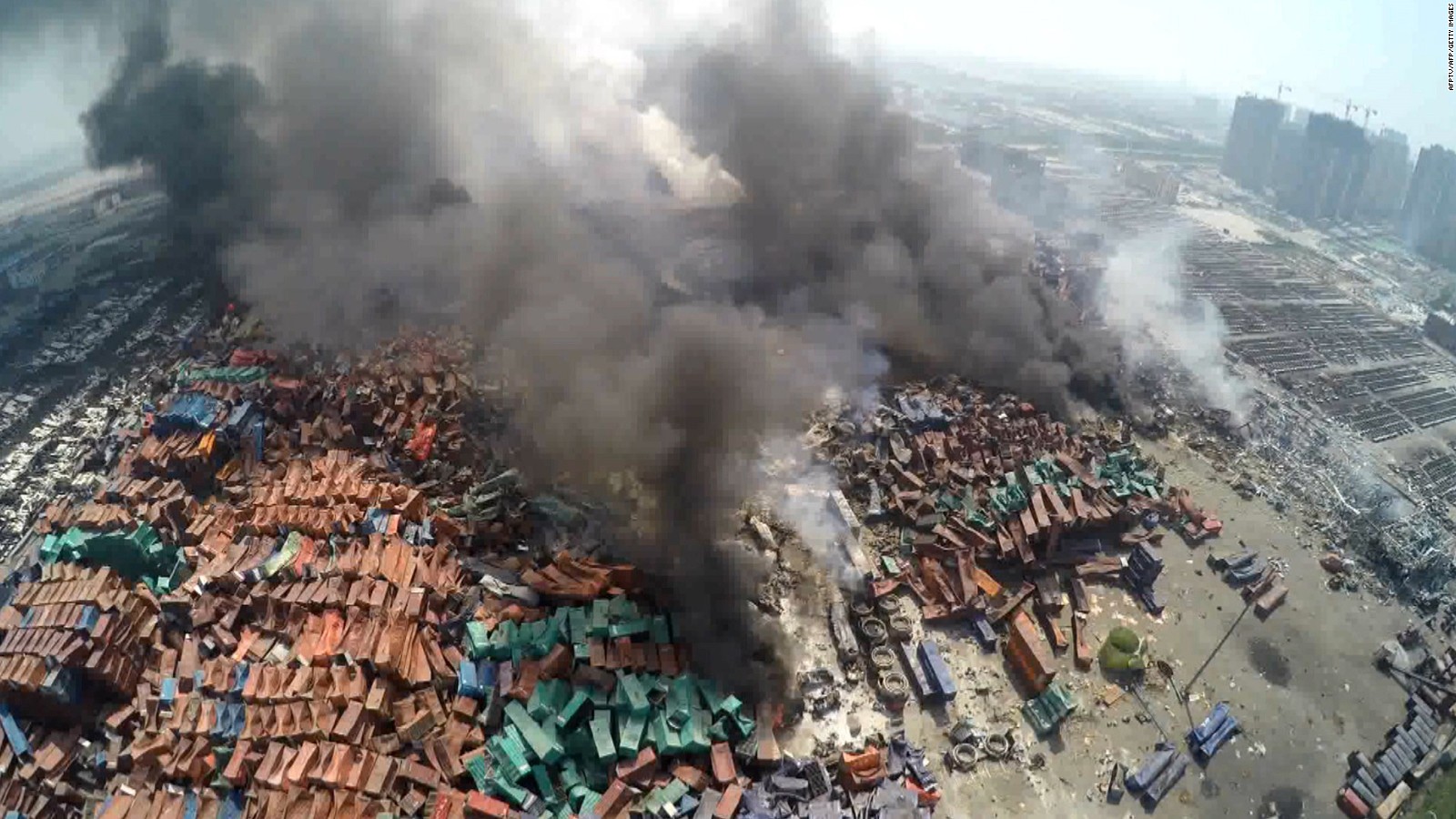
Tianjin, China: You
can see the devastation everywhere: in the hollowed-out shells of
buildings, in the anguished faces of relatives, in the parade of
scorched cars.
But
what set off
the terrifying explosions that ripped through warehouses containing
hazardous chemical materials, shooting fireballs across the sky and
shaking buildings more than 2 miles away?
Hours
later, amid the destruction in this northern Chinese port city of more
than 13 million people, the cause of Wednesday night's blast remained
unclear.
The explosions originated at a warehouse
site owned by Tianjin Dongjiang Port Rui Hai International Logistics
Co., a company that stores and transports dangerous chemicals.
Firefighters had reportedly been called to the area to tackle a blaze
before the first blast went off.
Company executives have been taken into custody, state media said.
The blasts' destructive force tore into Tianjin, smashing buildings and mangling shipping containers.
"I thought it was an earthquake," said Liu
Yue, a 25-year-old woman who lives about 4 kilometers (2½ miles) away.
"I was extremely scared. I was afraid my family was in danger."
She said the 16-story building she lives in was rocking.
In a statement, the environmental group Greenpeace said it feared the danger was not over.
"We are concerned that certain chemicals will continue to pose a risk to the residents of Tianjin," the statement said.
"According
to the Tianjin Tanggu Environmental Monitoring Station, hazardous
chemicals stored by the company concerned include sodium cyanide (NaCN),
toluene diisocyanate (TDI) and calcium carbide (CaC2)
People gathered outside one hospital not far from an area of badly damaged buildings, waiting for news of loved ones.
A severely burned man was wheeled past waiting crowds.
Some people collapsed from the heartbreak of losing someone close to them.
"Why did God take her? Why did God take my daughter?" one man cried out.
, all of which
pose direct threats to human health on contact. NaCN in particular is
highly toxic. Ca (C2) and TDI react violently with water and reactive
chemicals, with risk of explosion. This will present a challenge for
firefighting and, with rain forecast for tomorrow, is a major hazard,"
Greenpeace said.
Wen Wurui, Tianjin's
environment protection chief, told a news conference Thursday that some
chemical levels in the area were higher than normal but that they
wouldn't be dangerous to human health unless someone is exposed to them
for long periods.
Slightly under 90,000 people live within a 5 kilometer radius of the blast site, according to China's Earthquake Administration.
The explosions have raised questions about the storage of hazardous materials at Tianjin's port.
A
notice posted by the Tianjin Administration of Work Safety on its
website last week said city officials held a meeting with executives of
more than 20 companies that handle dangerous chemicals at the port.
The agency's director urged the executives to carry out safety management, the notice said.
Those
injured in the blasts were taken to various hospitals in the city, with
many reported to be suffering from cuts caused by broken glass.
No comments:
Post a Comment